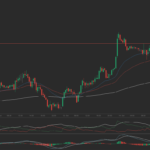WTI and Brent futures were deep in the red during early trade in Europe today, as investors priced in disappointing data from China. Prices were pressured by a number of bearish reports on global supply and demand disbalances last week, while geopolitical tensions failed to offer meaningful support.
WTI futures for October delivery on the New York Mercantile Exchange traded at $91.14 per barrel at 7:06 GMT today, down 1.22% for the day, while prices had ranged from $90.63 to $92.37 per barrel. The US benchmark lost ~1% last week.
Meanwhile on the ICE in London, November Brent stood at $97.10 per barrel, down 0.88%, daily prices between a two-year low of $97.02 and $97.87 per barrel. The contracts premium to November WTI widened to $6.60. The European brand dropped ~3.7% last week.
Several key downbeat China gauges weighed on crude, as traders price in a lower demand outlook for the worlds second-top oil-consuming economy. Industrial production, which accounts for about half of Chinese GDP and is a major driver for domestic oil consumption, logged 6.9% annual growth, the lowest in almost six year, nosediving after last months 9.0% rate and falling well-short of expected 8.8%.
Meanwhile, retail sales and fixed asset investments were also recorded lower than expected, adding 11.9% and 16.5%, respectively.
“The major news is the data out of China,” Ric Spooner, a chief strategist at CMC Markets in Sydney, said for Bloomberg. “It means potentially another area of moderation in overall oil demand.”
China will consume about 11% of all oil this year, according to the International Energy Agency (IEA).
Outlooks
Last week the IEA lowered its forecasts for oil demand growth for this year and 2015 by 150 000 and 100 000, respectively, to 900 000 in 2014 and 1.2m next year.
Meanwhile, Saudi Arabia said it is not planning a cut in output to accommodate a higher global price for crude, dispelling speculation that such a move will come to support prices soon. The country did, however, report a slowdown in production for August, though growing exports from Iraq and Libya more than accounted for it.
OPEC also lowered the projected volume of crude it would market next year, as global demand was seen slowing, supporting IEA’s outlook.
“The recent slowdown in demand growth is nothing short of remarkable,” the agency said.
IEA’s forecast cut comes as a separate US outlook proposed growing supplies, further pressuring crude. The Energy Department’s statistics arm, the Energy Information Administration, said oil prices next year will be lower as US crude output reaches a 45-year peak.
“We’re in a situation where the demand, supply scenario is fairly weak,” Spooner added for Bloomberg. “The market is stripping out a lot of the geopolitical risk premium.”
Ukraine
Ukraine was still on the radar, after the EU introduced fresh sanctions against Moscow on Friday, aimed directly at Russian state-owned oil companies. The measures deny companies like Rosneft and Gazprom Neft access to European capital markets and oil-related technology, significantly limiting their expansion capabilities.
The market was complacent about any immediate negative ramifications on a global scale, though, keeping the risk premium on a minimum level.
The Kremlin said it would respond to the new sanctions.
Meanwhile, the truce between Kiev and pro-Russian rebels was largely holding, though both sides seemed as distant from a peaceful resolution, with separatists calling for complete independence and Kiev even vowing to bring Crimea, the Black Sea peninsula annexed by Russia in March, back to Ukraine.
Technical support and resistance levels
According to Binary Tribune’s daily analysis for Monday, West Texas Intermediate October futures’ central pivot point is at $92.63. In case the contract breaches the first resistance level at $93.31, it will probably continue up to test $94.34. Should the second key resistance be broken, the US benchmark will most likely attempt to advance to $95.02.
If the contract manages to breach the first key support at $91.60, it will probably continue to drop and test $90.92. With this second key support broken, movement to the downside will probably continue to $89.89.
Meanwhile, November Brent’s central pivot point is projected at $98.41. The contract will see its first resistance level at $99.14. If breached, it will probably rise and test $100.33. In case the second key resistance is broken, the European crude benchmark will probably attempt to advance to $101.06.
If Brent manages to penetrate the first key support at $97.22, it will likely continue down to test $96.49. With the second support broken, downside movement may extend to $95.30 per barrel.





